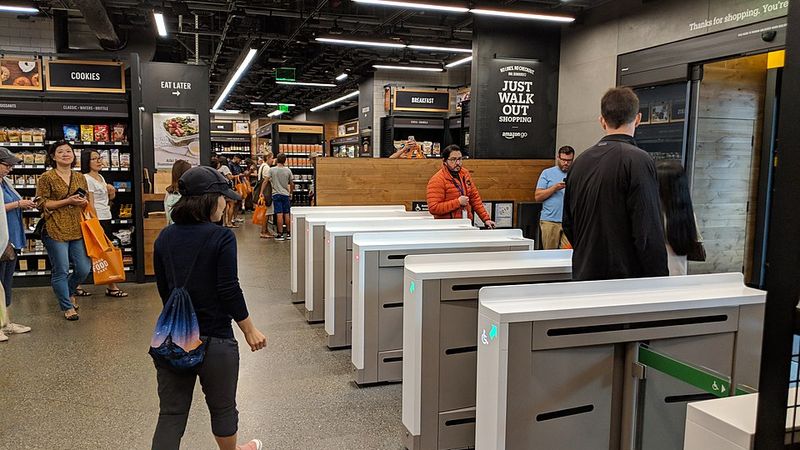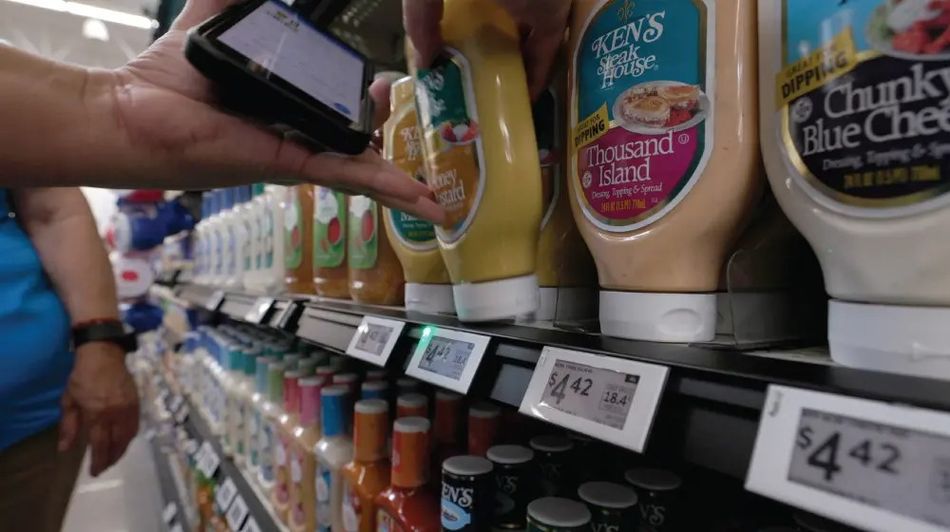Transforming Retail AI: The Future of Cashierless Shopping
AI and ML-driven cashierless stores not only improve operational efficiency and customer personalization but are also expected to propel the global AI retail market to over $40 billion by 2030.

Image credit: Amazon
Reliable and efficient cashierless stores are becoming increasingly in demand as they save customers’ time and energy and create unprecedented, customer-friendly shopping experiences. Additionally, with the global shortage of service employees, integrating the advancements of artificial intelligence (AI) and machine learning (ML) for significant transformation in the retail industry is crucial for retailers to meet customer expectations. AI technologies can improve efficiency, personalize customer experiences, cost-savings, forecast demand, and streamline operations in the retail industry.
According to a 2023 report by Grand View Research, market researchers expect the global AI retail market to reach over $40 billion by 2030, growing at a compound annual growth rate (CAGR) of 23.9 percent. This quick expansion demonstrates a significantly growing reliance on AI in retail [1]. This is where Axelera AI can be a game-changer for the retail industry, offering innovative solutions that enhance both the customer experience and store operations.
From enabling cashierless shopping to optimizing inventory and personalizing the shopping journey, Axelera AI empowers retailers to meet the demands of modern consumers. It enables a smooth shopping experience with intelligent tracking, immediate payment processing, customized shopping, and improved security. These advantages can help eliminate traditional checkout processes.
Cashierless Shopping: The Axelera AI Advantage
AI-powered systems use a combination of computer vision, sensor fusion, and deep learning to track products chosen by customers. These products are then automatically charged to customers' accounts as they leave the store. Such systems enable customers to shop and check out without traditional cashiers, reducing wait times and improving convenience. Here are some of the features implemented in cashierless shopping:
Biometric authentication or QR Code Scanning: Consumers may use multiple authentication methods or even QR code scanning for payment methods and identification. This biometric authentication is based on innovative AI technologies like computer vision and deep learning algorithms, resulting in advanced security, operational efficiency, and frictionless transactions.
Automated Purchase Tracking: AI-powered systems automatically track customer movements, recognize selected products, count purchases, and charge the associated payment method. Such an automated checkout process helps optimize operations and increase customer satisfaction by reducing checkout time, enhancing accuracy, and improving inventory visibility.
Preventative Measures Against Loss, Theft or Shrinkage: An AI-driven, computer-vision-enabled Point of Sale (POS) system can help prevent loss or theft. Advanced AI-powered surveillance systems can observe in-store activity, detect suspicious behavior, and provide improved security.
Axelera AI's powerful processing capabilities make it ideal for running sophisticated computer vision algorithms in real time. In a cashierless store, cameras connected to an Axelera AI board can track customers as they move through the store, identifying the items they pick up and automatically adding them to their virtual cart. When customers are ready to leave, the system automatically charges their account for the items in their cart, eliminating the need for traditional checkout lines. This creates a seamless shopping experience for the customers.
Personalized Shopping Experiences
In retail, the speed and smoothness of shopping are valuable aspects, but they do not represent the full picture. There is more to the shopping experience, including enjoyability, comfort, satisfaction, and easier decision-making. This is where personalization plays a central role.
AI-driven personalization makes shopping more relevant and engaging, resulting in holistically better shopping experiences. For instance, AI helps retailers gather and examine vast amounts of consumer data, including past purchases and behavioral trends. This enables them to provide better services and customizable experiences based on these datasets. Customer data and insights driven by AI play a significant part in developing individualized shopping experiences.
Similarly, stores can generate real-time dynamic, personalized experiences with AI-powered smart devices and sensors. By monitoring consumer movements and actions within the store, these technologies enable retailers to generate product recommendations and send them directly to customers’ smartphones.
A 2024 IBM consumer study surveyed 20,000 consumers across 26 countries and found that 85 percent of Gen Z consumers, 89 percent of millennials, and 75 percent of baby boomers and seniors prefer personalized offers[2]. This is a strong indication of the need for “hyper-personalization.”
With Axelera AI, retailers can implement dynamic pricing strategies based on real-time data to provide customized promotions depending on variables like stock levels, customer behavior, and time of day. As a result, they can improve customer engagement, maximize revenue, and maintain their competitiveness in the market.
For instance, Axelera AI can help a clothing store gather important information about its in-store customers. When a customer tries on a certain jacket several times without buying it, the store can use Axelera AI technology to track that behavior and set up personalized activities to help the customer make a buying decision. These include advertising the product features further or giving the customer a discount.
Enhancing Store Operations
Integrating AI into store operations through smart shelves, automated checkout systems, and in-store navigation provides customers with a more efficient, convenient, and personalized shopping experience.
Smart shelves, integrated with AI, sensors, and RFIDs, can streamline store operations, improve inventory management, and significantly enhance customer experience. AI can track inventory in real time, alerting staff when stock is low. According to a 2024 report by Deloitte, retailers using smart shelves have seen more streamlined and efficient restocking by leveraging robotics and connected devices[3]. Similarly, automated checkout systems that use AI enable cashierless transactions, reduce wait times, minimize human error, and enhance customer satisfaction while optimizing labor costs for retailers.
Axelera AI enables continuous monitoring of shelves, detection of stock levels, and tracking of product movement. It analyzes sales data and other factors to predict demand and optimize stock levels, reducing overstocking and waste. It also provides retailers with actionable insights into inventory management, enabling data-driven decisions and strategic planning.
For example, in a supermarket, Axelera AI can monitor the shelves and send an alert to restock items when inventory falls below a certain threshold. This would prevent out-of-stock situations and improve customer satisfaction.
In addition, with real-time mapping and location-based services, AI-driven in-store navigation systems can enhance store operations by improving customer experience, reducing employee workload, enhancing inventory management, and boosting sales. Statistics show that 59 percent of consumers want to use AI applications while shopping, and over 80 percent of those who have not used AI yet would like to learn more about how it can help them shop better[2].
Integrating Online and Offline Experiences
By integrating online and offline data, AI creates a seamless, personalized customer experience that meets today’s high expectations. As more businesses embrace AI-driven strategies, the gap between digital and physical interactions will continue to narrow, leading to more engaged customers and successful marketing outcomes. AI can fill the gap between online and offline, providing customers with a smooth, engaging, and customized shopping experience.
Conclusion
As retailers use AI and innovative technologies to create a more engaging, personalized, and convenient shopping experience, the future of cashierless shopping sounds very promising. Axelera AI solutions can revolutionize the retail sector by providing innovative features that improve store operations and customer satisfaction. With retail becoming an ever-more demanding space, integrating AI-driven technologies like Axelera AI boards will be crucial in delivering the seamless, efficient, and engaging experiences that shoppers expect.
References
[1] Artificial Intelligence in retail market trends | Grand View Research
[2] AI-Powered Retail: Revolutionizing In-Store Experiences to Meet Modern Consumer Demands
[3] Future of retail: Profitable growth through technology and AI | Deloitte

